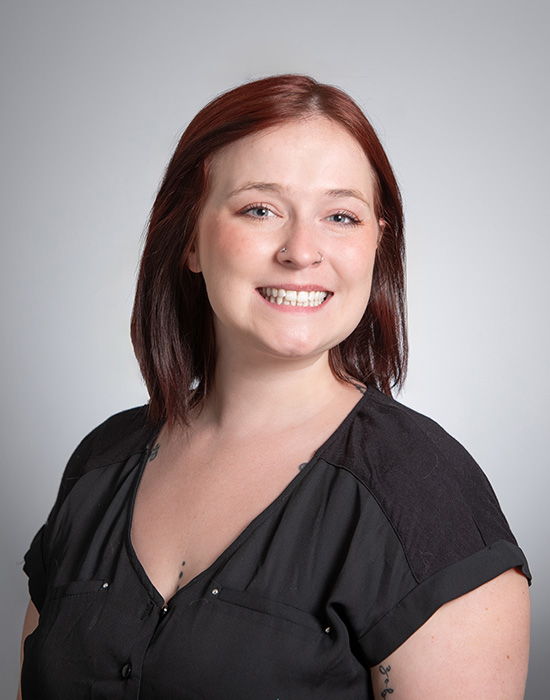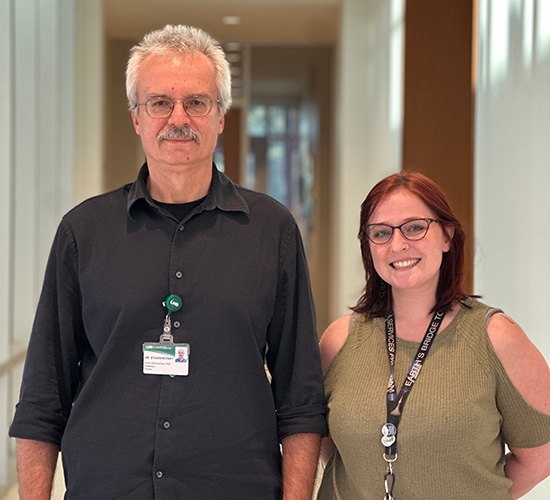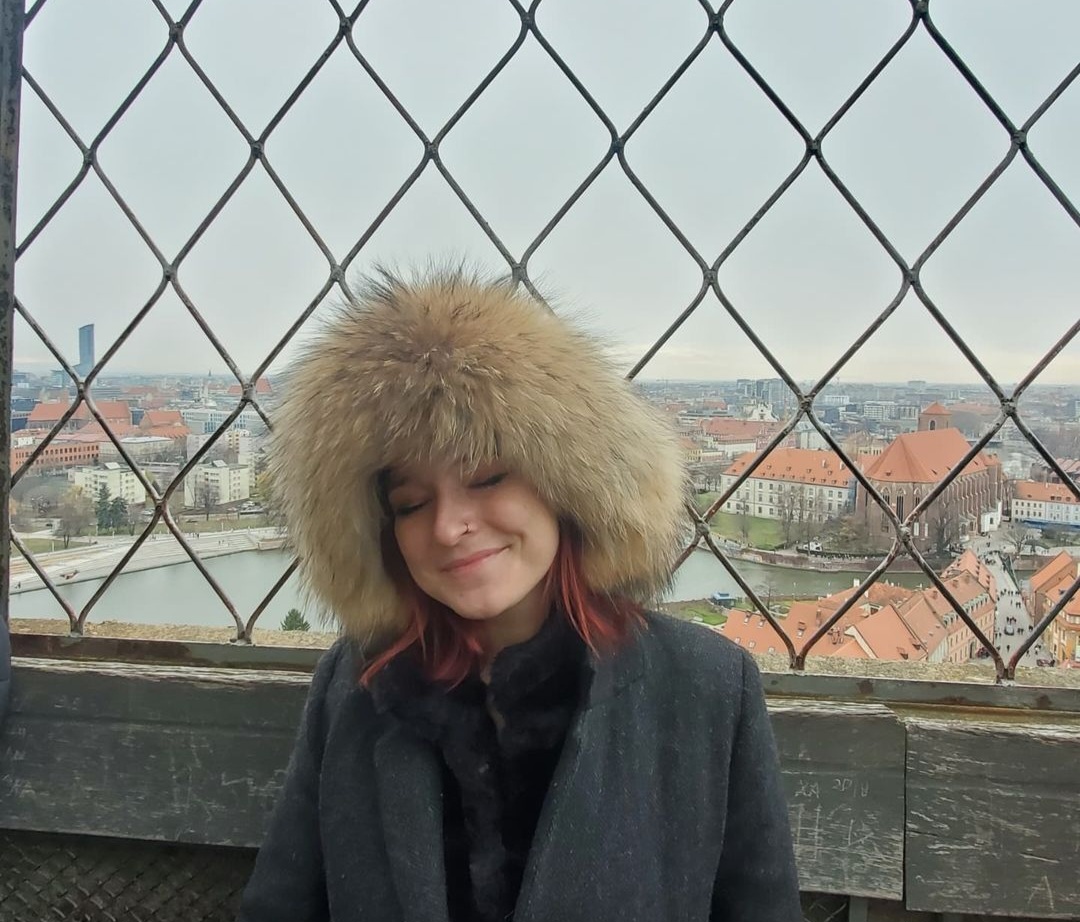 Riley Yager, a physics doctoral student and a Harbert Institute for Innovation and Entrepreneurship fellow
Riley Yager, a physics doctoral student and a Harbert Institute for Innovation and Entrepreneurship fellow
Photography: Jennifer Alsabrook-TurnerRiley Yager, a physics doctoral student at the University of Alabama at Birmingham, has become a powerhouse of cutting-edge research and innovation. Yager is named on two patents for inventing a unique catalytic reactor that uses nanofibers as catalysts to convert carbon dioxide into consumable oxygen. She is persevering as a successful woman in STEM.
In 2016, Yager joined the physics class of her mentor Andrei Stanishevsky, Ph.D., professor in the College of Arts and Sciences, who has witnessed her unprecedented growth as a student and as a person. Yager has evolved into a leader as she manages Stanishevsky’s lab while training the next generation of physicists. He credits her for increasing his lab’s visibility through her monumental contributions in earning the Green Labs certification for the lab.
“Riley has always been a brilliant, well-rounded student,” Stanishevsky said. “She has worked so hard over the years, always producing great outcomes. I am so proud of her for being the first in her family to pursue a doctoral degree. It has been an honor to witness her transformation from an undergraduate student to an experienced researcher and an inventor. Her leadership skills and commitment to my lab have been invaluable –– she keeps everything well-organized, mentors new students and has introduced significant new initiatives. To me, Riley is a full-scale colleague.”
Discovering a passion for physics
Since childhood, Yager was good at math, which evolved into a true passion in eighth grade, when her teacher gave her problem after problem and she solved them all effortlessly. Wanting to advance her math skills, Yager came to UAB as a transfer student to pursue a bachelor’s degree in civil engineering in 2015.
 Riley Yager with her mentor Andrei Stanishevsky, Ph.D.
Riley Yager with her mentor Andrei Stanishevsky, Ph.D.
Yager took a general physics class with Stanishevsky, where she discovered her perpetual passion for physics. Stanishevsky told students about his research in nanofibers and offered the opportunity to pursue research in the Czech Republic and Poland under the International Research Experience for Students program, which piqued Yager’s interest. Two months later, she declared physics as her second major and spent two years working with Stanishevsky and his foreign collaborators on nanofiber research. Riley completed two rounds of summer research under European Union’s Erasmus program.
In 2020, she received the Fulbright Scholarship to go to Poland, which was deferred due to the pandemic. Resolved to continue, Yager started her doctoral degree in physics at UAB. Stanishevsky worked with Yager to shift her Fulbright research to the usage of nanofibers in traditional and plasma-enabled catalysis, and successfully building a plasma-catalytic reactor for future NASA missions to Mars.
In 2021, she was able to fulfill her Fulbright Scholarship work in Poland.
“Working in Poland was one of the best experiences of my life,” Yager said. “I learned about cutting-edge research and gained hands-on experience to further my knowledge in nanofiber research.”
Yager utilized her Fulbright experience and won the NASA Space Technology Graduate Research Opportunities fellowship. That is one of her most meaningful accomplishments, she says, as only about 60 graduate students in the United States are awarded this grant annually.
“This is one of my proudest accomplishments, and I immediately hit the ground running on this project after getting back from Poland in 2022,” Yager said. “My entire dissertation is about converting carbon dioxide into consumable oxygen on Mars.”
 Riley Yager in PolandUnder this NASA fellowship, Yager spent two summers as a visiting technologist at the Kennedy Space Center in Florida. For the upcoming two summers, she will work at the U.S. Space and Rocket Center in Huntsville, Alabama.
Riley Yager in PolandUnder this NASA fellowship, Yager spent two summers as a visiting technologist at the Kennedy Space Center in Florida. For the upcoming two summers, she will work at the U.S. Space and Rocket Center in Huntsville, Alabama.
As an Innovate Fellow at UAB’s Harbert Institute for Innovation and Entrepreneurship, Yager has been able to patent her unique catalytic reactor design, a game-changing invention. She is now building a prototype, thanks to the Blazer Bridge Fund.
Future ventures
Yager will finish her Ph.D., in physics in 2026 and ultimately plans to start her own company focused on plasma methods for reducing greenhouse gases and biowaste. Her sustainability-oriented invention has applications beyond Mars; it is useful across industries to prevent greenhouse gas waste by recycling it into consumable oxygen.
“I believe my product can be used to treat methane, carbon dioxide, and many waste fluids and solids,” Yager said. “For example, breweries produce a lot of carbon dioxide waste and use a lot of oxygen to make beer. With my product, it can be a closed-looped system wherein carbon dioxide is converted into usable oxygen, minimizing waste.”
Currently, she is seeking a business partner through the Collat School of Business, where she plans to take business courses this spring to guide her in launching her product.